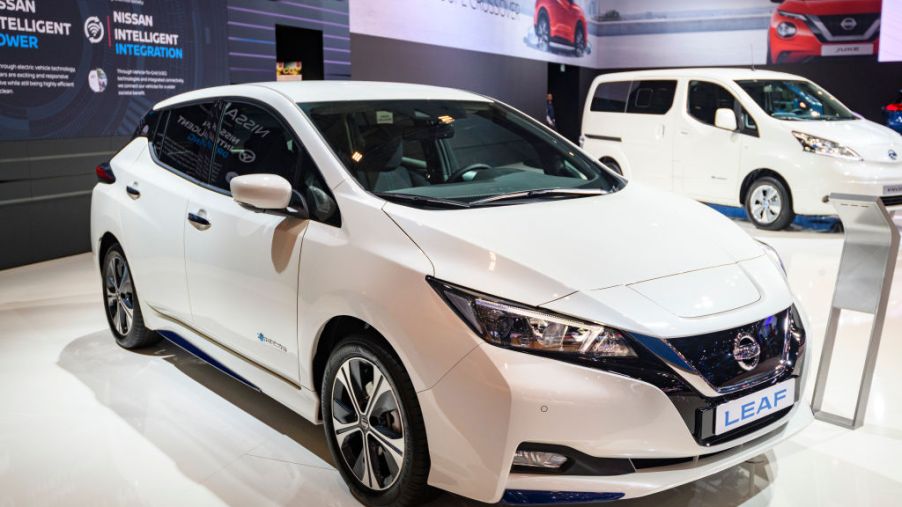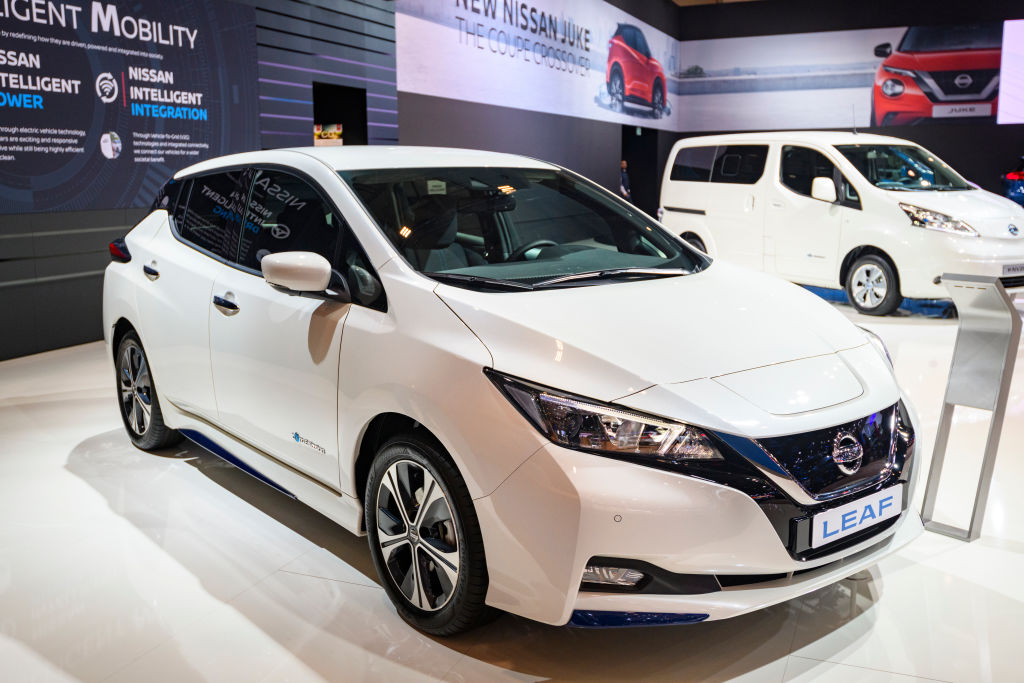
Is the Nissan Leaf Plus Worth Its Big Price Tag?
The Nissan Leaf came on the scene back in 2011 when few electric vehicles were being mass-produced. Now, the Leaf is facing competition from the likes of the Hyundai Kona Electric, the Chevy Bolt EV, and the Kia Niro, among others.
Nissan has tried to step up its game in the compact EV market by offering the Leaf Plus, which has an improved range and some additional amenities. But Nissan Leaf SL Plus tested by Carter MacLeod of CarFax.com costs $43,290. Does the Nissan Leaf Plus offer enough value to justify the steep sticker price?
Performance, range, and fuel economy
With a 62 kWh battery and a new 150 kW electric motor, the Nissan Leaf Plus produces 214 hp and 250 lb-ft of torque. By comparison, the base model Leaf with a 40 kWh battery makes 147 hp and 236 lb-ft of torque. This version has an electric driving range of up to 150 miles and gets a 104 MPGe combined EPA rating.
CarFax.com’s MacLeod liked the upgraded Leaf’s spirited acceleration. The heftier battery that is mounted low in the chassis also gives the five-door hatchback a lower center of gravity, which helps it handle better in the curves. Its performance is on par with most electric cars and it works especially well when dashing around city streets.
A more unusual feature that maximizes this electric vehicle‘s regenerative braking is its e-Pedal feature. It allows a driver to use only one pedal – the accelerator – to drive. When the driver lifts his or her foot off the pedal, the regenerative braking kicks in. Then the car quickly slows down just as if the brakes were applied. MacLeod suggests that drivers practice with this feature in a parking lot since sudden stops can result from maneuvers that require intensive braking and accelerating.
Inside the Nissan Leaf
Because it’s a compact hatchback with a wheelbase of just over 106 inches, the Leaf’s ride lacks smoothness. It’s also short on legroom for taller drivers. A steering wheel that tilts but doesn’t telescope fails to compensate for the limited space. The seats aren’t comfortable either.
The quality of the Leaf’s interior is decent, but it should be much better for a car that prices out over $40,000. It doesn’t compare favorably to the cabin space, interior quality, or driving range of similarly priced competitors such as the Hyundai Kona Electric and the Kia Niro. And at 23.6 cubic feet of cargo volume and 30 cubic feet with the second-row seats folded down, the Leaf doesn’t offer as much trunk space as its rivals, either.
Infotainment and safety tech

The Nissan Leaf Plus comes equipped with a 7.0-inch touchscreen and uses Nissan’s standard infotainment system. MacLeod thinks that this system isn’t user-friendly because of the on-screen clutter created by unnecessary icons and shortcuts. But an advantage of this system that MacLeod didn’t mention is that the user can choose options to view useful EV-related information such as estimated range, locating charge stations, and current state of battery charge.
And while the Nissan Leaf Plus does have Apple CarPlay (and Android Auto) integration, it crashed every few seconds on MacLeod’s car. This seems like an inexcusable bug, considering the car’s price.
Nissan’s optional suite of driver-assist safety features come on this version of the Leaf. They can be controlled by a switch mounted on the steering wheel. Included in this collection are stop-and-go traffic adaptive cruise control, automatic emergency braking, and blind-spot warning. An optimized lane-keeping assist feature keeps the car centered in the lane to reduce driver fatigue. The car also sets off a series of warnings if a driver takes his or her hands off the steering wheel.
Is this EV worth the money?
Electric vehicles are gradually becoming more affordable. Currently, buyers do expect to pay more for this technology, but they also expect value. And this is where the 2019 Nissan Leaf Plus lags. Its lively performance and solid safety suite offer some value, but deficiencies in cabin and cargo space, interior quality, and Nissan’s failure to pay attention to small but important conveniences all are strikes against this $40,000-plus version.
MacLeod is right: even with a $7,500 federal credit, paying over $35,000 for a Nissan compact hatchback is too much, even if it is an EV. You can buy a Chevy Bolt or a Hyundai Kona Electric for about the same price and get so much more. For most potential EV buyers, the Nissan Leaf Plus isn’t worth the big price tag after all.


